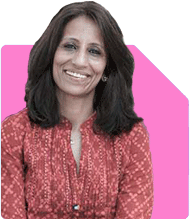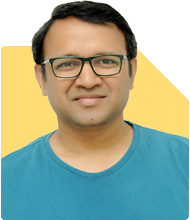36-Year-Old Sandeep Needs Investment Advice - I Want to Invest an Additional 7k per Month for 20 Years.
Ramalingam Kalirajan |10894 Answers |Ask -Follow
Mutual Funds, Financial Planning Expert - Answered on Sep 27, 2024
He has an MBA in finance from the University of Madras and is a certified financial planner.
He is the director and chief financial planner at Holistic Investment, a Chennai-based firm that offers financial planning and wealth management advice.... more

HI Sir , My self Sandeep .36 years old .Need your advice on my investments . currently ,I have a monthly SIP of following funds- UTI Nifty 50 Index fund - 3K, HDFC Retirement saving fund-1K, HDFC children Gift fund-1K.I want to invest 7 K more as monthly SIP . I have gone through various analysis and thinking of investing in below manner - 1- 2K as monthly SIP in flexicap - either Parag Parikh Flexicap or JM Flexicap 2- 3k as monthly SIP in ICICIpru nifty 150 midcap index fund /kotak equity opportunity fund/ Motilal oswal midcap Fund 3- 2K in small cap fund - Axis small cap fund/Nippon India small cap fund Kindly suggest the investment strategy and the funds in respective area for next 20 years horizon . Thanks & Regards Sandeep
Assessing Your Existing Portfolio
UTI Nifty 50 Index Fund (Rs 3,000 SIP): While index funds offer low-cost exposure to the market, they typically follow the market and don’t outperform it. Actively managed funds, when chosen wisely, can potentially give better returns. Though index funds provide simplicity, keep in mind that over the long term, they may miss out on market-beating opportunities.
HDFC Retirement Saving Fund (Rs 1,000 SIP): This is likely a balanced fund meant for long-term retirement planning. Balanced funds are useful as they offer both growth and stability, but they may underperform compared to pure equity funds in a bull market. It’s a good conservative addition to your portfolio, but should not dominate.
HDFC Children’s Gift Fund (Rs 1,000 SIP): Similar to the retirement fund, this fund might focus on long-term stable returns. However, ensure that you evaluate its long-term performance. These kinds of funds sometimes have a more conservative approach than growth-focused equity funds.
Proposed Additional Investments (Rs 7,000 SIP)
You have wisely considered diversifying your portfolio across flexicap, midcap, and small-cap categories. Here’s an assessment of your choices:
1. Flexicap Funds (Rs 2,000 SIP)
Flexicap funds provide flexibility to invest across large, mid, and small-cap stocks based on market conditions, which offers a balanced approach to risk and growth.
Your Choice of Parag Parikh Flexicap or JM Flexicap: These funds have flexibility in their investment strategy, making them versatile. Flexicap funds are ideal for navigating different market phases, providing long-term growth potential while managing risk.
Recommendation: Continue with your plan to invest in a flexicap fund as they offer a good balance of diversification and risk-adjusted returns.
2. Midcap Funds (Rs 3,000 SIP)
Midcap funds target companies with strong growth potential but higher volatility. Over the long term, midcap funds tend to outperform large-cap funds, making them suitable for your 20-year horizon.
ICICI Pru Nifty 150 Midcap Index Fund, Kotak Equity Opportunity Fund, or Motilal Oswal Midcap Fund: Midcap index funds track midcap indices, but actively managed midcap funds like Kotak or Motilal Oswal can offer better returns if the fund manager picks strong-performing companies.
Recommendation: Opt for an actively managed midcap fund instead of a midcap index fund. Actively managed funds have a better chance of delivering higher returns over a 20-year horizon by selecting companies with high growth potential.
3. Small Cap Funds (Rs 2,000 SIP)
Small-cap funds target smaller companies, which offer high growth potential but with higher volatility. Over a 20-year period, small caps can significantly enhance your returns but require a longer commitment to ride out the volatility.
Axis Small Cap Fund or Nippon India Small Cap Fund: Both are strong performers, but small-cap funds are highly volatile in the short term. Since your horizon is 20 years, small-cap funds make sense as they can deliver substantial long-term growth.
Recommendation: Invest in a small-cap fund for higher long-term returns, but understand that short-term fluctuations are inevitable.
Key Points for a Balanced Portfolio
Diversification: You have a well-diversified portfolio with a good mix of large-cap (via index), flexicap, midcap, and small-cap funds. This diversification will help balance risk and maximize growth opportunities over time.
Active vs Passive Investing: While index funds (passive) have their place in a portfolio for low-cost exposure, actively managed funds generally offer better opportunities for higher returns, especially in midcap and small-cap categories. With a 20-year horizon, consider focusing more on actively managed funds.
SIP Discipline: Your current strategy of investing via SIP is excellent for long-term wealth creation. SIPs help you ride market volatility, average out costs, and allow consistent investment without trying to time the market.
Considerations for the Long Term
Asset Allocation: As you approach key financial goals (like retirement or children’s education), you may want to gradually reduce exposure to volatile small-cap and midcap funds, shifting more towards large-cap or flexicap funds to safeguard your wealth.
Risk Appetite: Since you’re 36 years old, you have ample time to take on more risk through small-cap and midcap investments. However, always review your risk tolerance every 5 to 10 years to ensure your portfolio remains aligned with your changing financial goals and risk capacity.
Tax Efficiency: Make sure to review the tax implications of your investments. Equity funds enjoy favorable tax treatment, especially over the long term. Any gains held for more than 1 year are taxed at a lower rate (12.5% beyond Rs 1.25 lakh of gains).
Final Insights
You’re on a great path with your disciplined SIP strategy. Diversifying across flexicap, midcap, and small-cap funds will give your portfolio the right mix of stability and growth. Flexicap funds provide the flexibility you need in dynamic market conditions, while midcap and small-cap funds will offer the growth potential needed for your 20-year investment horizon.
Keep in mind to monitor your portfolio annually or biannually to ensure it stays aligned with your long-term goals. Over time, you might want to shift a part of your portfolio to more stable funds, depending on how close you are to achieving your financial goals.
Best Regards,
K. Ramalingam, MBA, CFP,
Chief Financial Planner,
www.holisticinvestment.in
https://www.youtube.com/@HolisticInvestment
You may like to see similar questions and answers below
Ramalingam Kalirajan |10894 Answers |Ask -Follow
Mutual Funds, Financial Planning Expert - Answered on May 29, 2024
Ramalingam Kalirajan |10894 Answers |Ask -Follow
Mutual Funds, Financial Planning Expert - Answered on May 09, 2024
Ramalingam Kalirajan |10894 Answers |Ask -Follow
Mutual Funds, Financial Planning Expert - Answered on Feb 12, 2025
Ramalingam Kalirajan |10894 Answers |Ask -Follow
Mutual Funds, Financial Planning Expert - Answered on Jun 16, 2025
Mayank Chandel |2576 Answers |Ask -Follow
IIT-JEE, NEET-UG, SAT, CLAT, CA, CS Exam Expert - Answered on Dec 17, 2025
Radheshyam Zanwar |6747 Answers |Ask -Follow
MHT-CET, IIT-JEE, NEET-UG Expert - Answered on Dec 16, 2025
Shalini Singh |181 Answers |Ask -Follow
Dating Coach - Answered on Dec 16, 2025
Patrick Dsouza |1429 Answers |Ask -Follow
CAT, XAT, CMAT, CET Expert - Answered on Dec 16, 2025
Nayagam P P |10858 Answers |Ask -Follow
Career Counsellor - Answered on Dec 16, 2025
Nayagam P P |10858 Answers |Ask -Follow
Career Counsellor - Answered on Dec 16, 2025
Samraat Jadhav |2510 Answers |Ask -Follow
Stock Market Expert - Answered on Dec 16, 2025
Samraat Jadhav |2510 Answers |Ask -Follow
Stock Market Expert - Answered on Dec 16, 2025
Nayagam P P |10858 Answers |Ask -Follow
Career Counsellor - Answered on Dec 16, 2025
Nayagam P P |10858 Answers |Ask -Follow
Career Counsellor - Answered on Dec 16, 2025

























